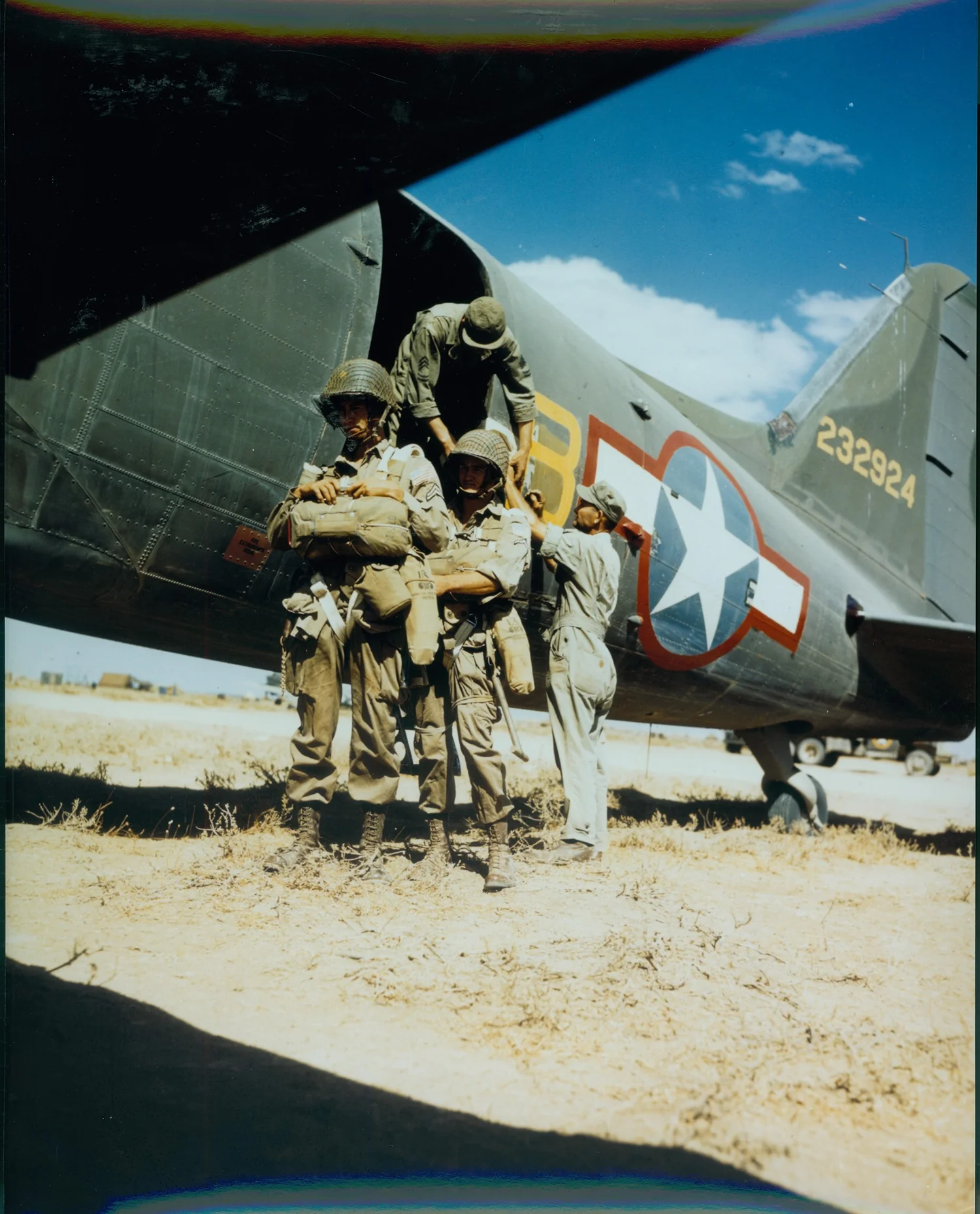In the predawn darkness of July 10, 1943, the U.S. Army’s vaunted 82nd Airborne Division embarked on its first-ever combat jump, spearheading Operation Husky, the Allied invasion of Sicily. What was intended as a precise insertion quickly devolved into a chaotic crucible, a brutal baptism by fire that tested the mettle of America’s elite paratroopers against the unforgiving elements and a tenacious enemy.
As the C-47 transport planes droned over the Sicilian coast, high winds, a relentless and unforeseen adversary, began to buffet the aircraft. When the order came to jump, the paratroopers plummeted into the night, but not towards their carefully designated drop zones. Instead, they were scattered across vast stretches of the island, far from their assigned rallying points. Companies were fragmented, platoons dispersed, and individual soldiers found themselves isolated in unfamiliar territory.
Despite the disarray, the spirit of the Airborne shone through. Deprived of their intended formations, these highly trained infantrymen, many on their first taste of combat, rapidly adapted to the fluid situation. Small groups, and even lone paratroopers, maximized every opportunity. They engaged Axis patrols, ambushed supply convoys, and sowed confusion behind enemy lines, turning what could have been a disaster into a series of localized, disruptive strikes that bewildered German and Italian defenders. Their independent actions, though unplanned, contributed significantly to the overall Allied objective, forcing the enemy to divert resources and react to threats from unexpected directions.
However, the challenges of the airborne operation were far from over. On July 11, General George S. Patton, seeking to reinforce the Allied center, ordered a second, crucial parachute drop involving reserve regiments. Tragically, the communication lines proved fatally flawed. Not every American unit, particularly naval forces guarding the invasion beaches, had been fully informed of the impending friendly airborne insertion.
As the transport planes, arriving shortly after an Axis air raid, approached their drop zones, they were met with a devastating barrage of anti-aircraft fire – not from the enemy, but from American naval units mistaking them for hostile aircraft. In a heartbreaking turn of events, the 82nd Airborne Division suffered immense losses, with 37 out of 144 planes shot down by friendly fire. The skies over Sicily, which had just witnessed the courage of the first combat jumpers, now bore witness to a tragic misunderstanding, underscoring the immense complexities and inherent dangers of large-scale combined arms operations in the fog of war.
The Sicily jump, though marred by unforeseen challenges and tragic losses, cemented the 82nd Airborne’s reputation for resilience and improvisation. It was a harsh but invaluable lesson in the realities of airborne warfare, paving the way for future, more coordinated, and equally daring operations. The paratroopers of the 82nd, scattered but unbroken, had truly earned their wings in the unforgiving skies above Sicily.
Sign up for our Sunday Spectator. Delivered to your inbox every Sunday, with all the news from the week.















